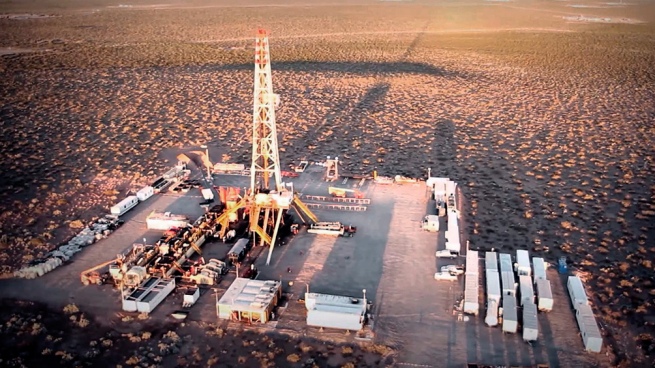The royalties received by Hydrocarbon-producing provinces reached a record level of $18,375 million in January, 68.9% more than in the same month of 2021mainly due to the impulse of the unconventional oil and gas deposits of Vaca Muerta.
In the last three years, the global income of the provinces grouped in the Federal Organization of Hydrocarbon-Producing States (Ofephi) in royalties grew by 349.7%, thirty percentage points more than the accumulated inflation in that period, from according to the data crossing of the Ministry of Energy and the National Institute of Statistics and Censuses (Indec).
However, the interannual evolution of the collection of hydrocarbon royalties did not occur uniformlyand the impact it had on the public accounts of Neuquén is much more significant than in the rest of the provinces.
About, the Minister of Economy and Infrastructure of Neuquén, Guillermo Ponstold Télam that in the term of four years participation doubled Percentage of royalties in the total resources of the province.
“Before 2018 royalties represented approximately 20% of income; Since the development of the Vaca Muerta deposits, Neuquén has broadly divided its resources into three-thirds between the Co-participation, royalties and provincial taxes. And now, royalties come to represent more or less 40%”reviewed.
Pons’s statements open a new vein of analysis of the importance of Vaca Muerta, usually considered in light of its contribution to Argentina’s future self-sufficiency in energy matters, foreign exchange earnings through exports or economic growth. , demographic and real estate of the area of influence.

The impact on the public accounts of Neuquén is already reflected in the ordering of the provinces in terms of the share of their own resources in relation to the total, in a country in which more than 70% of the income of the provinces comes from the Federal Co-participation and other transfers of national origin.
The most benefited provinces
About, a report by the Center for Argentine Political Economy (CEPA)revealed that Neuquén displaced the province of Buenos Aires from second place among the jurisdictions that have the highest percentage of their own resources over the total (58%), only surpassed by the City of Buenos Aires.
In January, the consolidated income for the ten producing provinces (Neuquén, Santa Cruz, Tierra del Fuego, Chubut, Río Negro, La Pampa, Mendoza, Salta, Jujuy and Formosa) were $18,375 million, some 7,500 million pesos more than in the same month last year, and “exceeding the record reached a month ago at almost $1,000 million”, highlighted the consulting firm Aerarium.
Of that sum, 73.5% corresponded to oil royalties ($13,509 million), 23.6% to gas ($4,344 million), 2.7% to fuels ($501 million) and 0.2% to LPG ($20 million).
The 68.9% global year-on-year increase was not uniform and only Neuquén, with a growth of 100.6%, exceeded the general average, while Two other provinces followed with increases higher than inflation for the period: Salta (60.3%) and Santa Cruz (59%).
The increase in the production of unconventional oil and gas also had its correlate in a higher income for the collection of Gross income: According to the National Directorate of Provincial Affairs (DNAP), Neuquén is the fifth district behind Buenos Aires, CABA, Córdoba and Santa Fe.
According to the Hydrocarbons Lawroyalties are made up of 15% of the values of oil and gas, as well as sales of fuels and Liquefied Petroleum Gas (LPG).
Three factors affect its evolution: the production of hydrocarbons, the fixed price for oil and gas and, in addition, the exchange parity, given the conversion from dollars to pesos.
Combining These last two variables are reason for permanent dialogue between the national government and the producing provincesbased on the fact that the local price is lower than the international price and, consequently, implies a lower collection of royalties.
Provincial sources acknowledged to Télam that the differentiated prices “are a tool used to regulate the prices of a very sensitive sector in terms of inflation,” but at the same time they indicated that hydrocarbons “are non-renewable resources and a once they are consumed there is no way to replenish them”.
“In some way, we could say that the provinces are subsidizing this policy, providing funds that should reach us, but we are also aware that we are part of a country and obviously inflation matters to us,” they concluded.

















